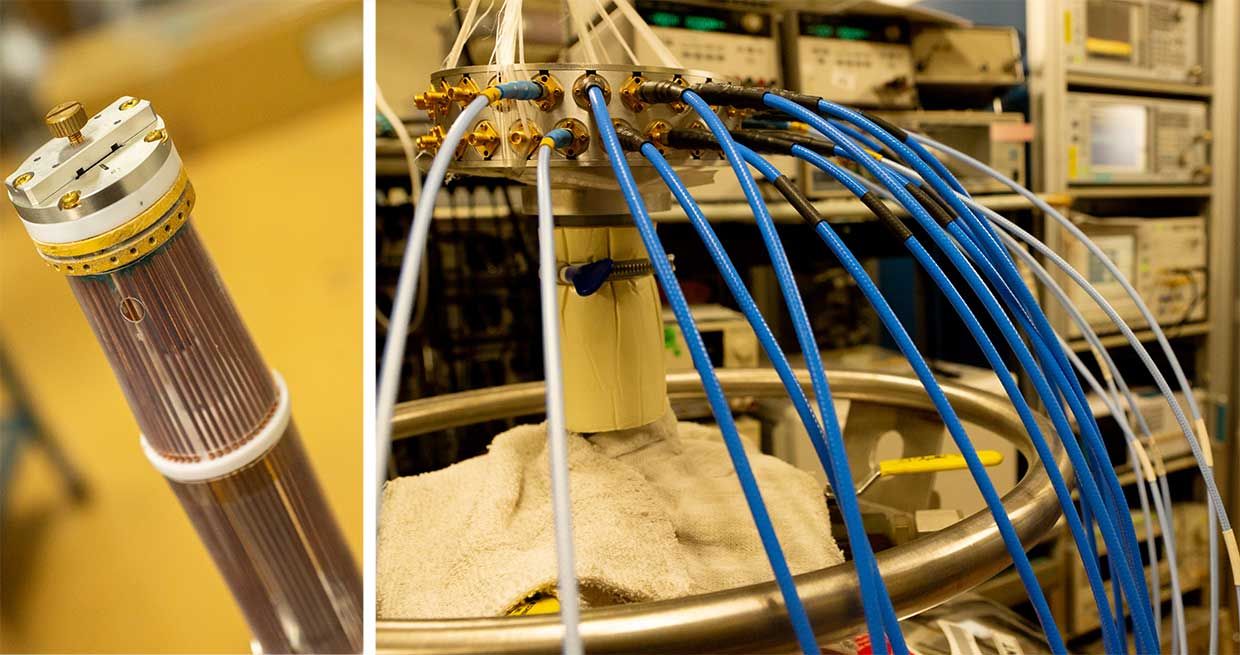Superconducting Microprocessors? Turns Out They're Ultra-Efficient
Computers use a staggering amount of energy today. According to one recent estimate, data centers alone consume two percent of the world's electricity, a figure that's expected to climb to eight percent by the end of the decade. To buck that trend, though, perhaps the microprocessor, at the center of the computer universe, could be streamlined in entirely new ways.
One group of researchers in Japan have taken this idea to the limit, creating a superconducting microprocessor-one with zero electrical resistance. The new device, the first of its kind, is described in a study published last month in the IEEE Journal of Solid-State Circuits.
Superconductor microprocessors could offer a potential solution for more energy efficient computing power-but for the fact that, at present, these designs require ultra-cold temperatures below 10 kelvin (or -263 degrees Celsius). The research group in Japan sought to create a superconductor microprocessor that's adiabatic, meaning that, in principle, energy is not gained or lost from the system during the computing process.
 Photos: Christopher Ayala Left: The chip-end of a custom-built helium immersion probe used to test superconducting chips. Right: The connection-end of the helium immersion probe connected to testing equipment via coaxial cables. The probe is inserted into a liquid helium dewar to achieve a cryogenic temperature of 4.2 Kelvin.
Photos: Christopher Ayala Left: The chip-end of a custom-built helium immersion probe used to test superconducting chips. Right: The connection-end of the helium immersion probe connected to testing equipment via coaxial cables. The probe is inserted into a liquid helium dewar to achieve a cryogenic temperature of 4.2 Kelvin. While adiabatic semiconductor microprocessors exist, the new microprocessor prototype, called MANA (Monolithic Adiabatic iNtegration Architecture), is the world's first adiabatic superconductor microprocessor. It's composed of superconducting niobium and relies on hardware components called adiabatic quantum-flux-parametrons (AQFPs). Each AQFP is composed of a few fast-acting Josephson junction switches, which require very little energy to support superconductor electronics. The MANA microprocessor consists of more than 20,000 Josephson junctions (or more than 10,000 AQFPs) in total.
Christopher Ayala is an Associate Professor at the Institute of Advanced Sciences at Yokohama National University, in Japan, who helped develop the new microprocessor. The AQFPs used to build the microprocessor have been optimized to operate adiabatically such that the energy drawn from the power supply can be recovered under relatively low clock frequencies up to around 10 GHz," he explains. This is low compared to the hundreds of gigahertz typically found in conventional superconductor electronics."
This doesn't mean that the group's current-generation device hits 10 GHz speeds, however. In a press statement, Ayala added, We also show on a separate chip that the data processing part of the microprocessor can operate up to a clock frequency of 2.5 GHz making this on par with today's computing technologies. We even expect this to increase to 5-10 GHz as we make improvements in our design methodology and our experimental setup."
The price of entry for the niobium-based microprocessor is of course the cryogenics and the energy cost for cooling the system down to superconducting temperatures.
But even when taking this cooling overhead into account," says Ayala, The AQFP is still about 80 times more energy-efficient when compared to the state-of-the-art semiconductor electronic device, [such as] 7-nm FinFET, available today."
Since the MANA microprocessor requires liquid helium-level temperatures, it's better suited for large-scale computing infrastructures like data centers and supercomputers, where cryogenic cooling systems could be used.
Most of these hurdles-namely area efficiency and improvement of latency and power clock networks-are research areas we have been heavily investigating, and we already have promising directions to pursue," he says.